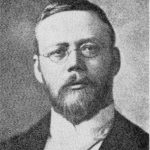Mass — use heavy materials
Air-tightness — cover the whole enclosure airtight
Flexibility — keep it limp, better to overlap, than stretch tight
Isolation — separate (decouple) from surrounding structure
Although each project has to be considered individually, the above principles are relevant in most cases.
MASS:
Massive, heavyweight barriers will block more sound energy than lightweight barriers. (Less noise will go through it.) This is because the high density of heavyweight materials suppresses sound vibrations inside the material, to a degree that the inside wall of a room, vibrates with less movement. Therefore, the amplitude of the sound waves re-radiated into the air inside the room, loudness, is also minimized.
NOTE: Although a reduction in the amplitude of sound waves affects the strength or loudness of a sound, it does not affect the frequency (pitch) of that sound.
Mass Law
The Mass Law states that the sound insulation of a single-layer partition has a linear relationship with the surface density (mass per unit area) of the partition, and increases with the frequency of the sound.
Single-layer construction includes composite barriers such as plastered brickwork, as long as the layers are bonded together.
- The heavier the barrier, the better the sound reduction.
In theory, for each doubling of mass sound insulation increases by 6 dB.
For example, the average sound reduction of a brick wall increases from 45 dB to 50 dB when the thickness is increased from 4 inch to 8.4 inch. This doubling of mass does not have to be achieved by a doubling of thickness, as the mass of a wall for sound insulation purposes is specified by its surface density measured in lbs per square foot (rather than per cubic foot). Similar sound reduction can be achieved by adding thinner, but heavier materials, like a layer of Mass Loaded Vinyl.
- The higher the frequency the easier it is to block it.
Sound insulation increases by about 6 dB whenever the frequency is doubled.
Any doubling of frequency is a change of one octave. For example, a brick wall provides about 10 dB more insulation against 400 Hz sounds than against 100 Hz sounds. (100Hz = bass note, 400 Hz = Voice). This change, from 100 to 200 Hz and then 200 to 400 Hz, is a rise of two octaves. In extreme cases you might not even hear the sound but can feet the wall vibrating to the touch.
But increasing the mass alone is not enough. If you feel that Mass law does not work in your construction, that is because other factors such as air-tightness, rigidity and isolation have an effect.
AIR-TIGHTNESS:
Areas of reduced insulation or small gaps in the construction of a wall have a far greater effect on overall insulation than you might think. The effective soundproofing of a structure depends on air-tightness and uniformity
For example, if a brick wall contains a hole or crack which in size represents only 0.1 per cent of the total area of the wall, the average sound reduction of that wall is reduced from 50 dB to 30 dB by about 40% (!).
In general, âsound leaksâ should be considered as carefully as leaks of water.
Common air gaps: Wallfloor gaps, Gaps around doors, Poor window seals, Unsealed pipe runs, Unsealed cable runs, Porous barrier material (Cinder blocks)
Another aspect of soundproofing, that is often overlooked is consistency of the materials STC (Sound Transmission Coefficient) used in construction. Your construction is only as soundproof as its weakest point. For example, an unsealed door occupying 25 per cent of the area of a half-brick wall reduces the average sound reduction efficiency of that wall from around 45 dB to 23 dB.
MEMBRANE FLEXIBILITY:
Rigidity is a physical property of a partition and depends upon factors such as the elasticity of the materials and the way the partition is installed. High rigidity of the barrier can cause loss of insulation at certain frequencies due to resonances and coincidence effects. These effects diminish the expected results according to the Mass Law.
Resonance
Loss of insulation by resonance occurs if the incident sound waves have the same frequency as the natural frequency of the partition. The increased vibrations that occur in the structure are passed on to the air and so the insulation is lowered. Resonant frequencies are usually low and most likely to cause trouble in the air spaces of cavity construction.
Coincidence
Loss of insulation by coincidence is caused by the bending flexural vibrations, which can occur along the length of a partition. When sound waves reach a partition at angles other than 90°, their transmission can be amplified by the flexing inwards and outwards of the partitions. The sound-wave frequency and the bending-wave frequency coincide at the critical frequency. For several octaves above this critical frequency the sound insulation tends to remain constant and less than that predicted by the Mass Law. Coincidence loss is greatest in double-layer constructions, such as cavity walls or hollow blocks.
Flexible (limp) materials, combined with high mass, are best for high sound insulation. But even if you get the flexible high mass material such as Mass Load Vinyl, it needs to be installed in a way that keeps it limp: for example attached only at the top and allowed to hang freely, or installed in a loose wave-like manner, especially if sandwiched between two rigid surfaces, to keep its limp properties.
ISOLATION:
Sound transfers through any medium air, structural elements of buildings such as floors, walls. As the sound converts to different wave motions at the junction of different materials, energy is lost and an incremental amount of insulation is gained. This is the principle behind the effectiveness of air cavities in windows, of floating floors, of carpets and of resilient mountings for vibrating machines. Decoupling of elements of construction can be effective in reducing the transmission of sound through a structure. Some broadcasting and concert buildings, and acoustic labs, achieve very high insulation by using completely discontinuous construction of a double structure separated by resilient mountings and rested on a springy support mounts.
Sound isolation can be easily ruined by strong flanking transmissions through rigid links, even by a single nail. Cavity constructions must be sufficiently wide for the air to be flexible, otherwise resonance and coincidence effects can cause the insulation to be reduced at certain frequencies. In small air gaps in conjunction with rigid walls air gaps couples with the walls and separation effect gets lost.
Soundproofing and sound isolation need to be looked at as an integral complex approach where all principals are observed. Even an incremental increase in sound isolation can have a great effect on how it is being perceived.Because sound levels are measured using a logarithmic scale, a reduction of nine decibels is equivalent to elimination of about 80 percent of the unwanted sound.






 Folded in Travel Case: Width: 23 inches; Length: 22 inches, Thickness: 4 inches.TIONS
Folded in Travel Case: Width: 23 inches; Length: 22 inches, Thickness: 4 inches.TIONS

 Step 3: Keep the bracket in the slot and flip the CoVB over the microphone stand pole. Match the pole with the opening and insert the pole into the hole going through the openings in the cover and the inside the booth.
Step 3: Keep the bracket in the slot and flip the CoVB over the microphone stand pole. Match the pole with the opening and insert the pole into the hole going through the openings in the cover and the inside the booth.




